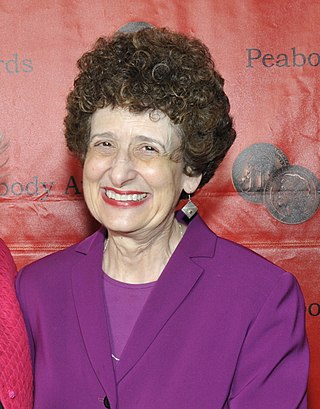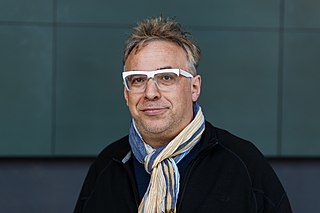
Herbert Marshall McLuhan was a Canadian philosopher whose work is among the cornerstones of the study of media theory. He studied at the University of Manitoba and the University of Cambridge. He began his teaching career as a professor of English at several universities in the United States and Canada before moving to the University of Toronto in 1946, where he remained for the rest of his life.
Media studies is a discipline and field of study that deals with the content, history, and effects of various media; in particular, the mass media. Media Studies may draw on traditions from both the social sciences and the humanities, but mostly from its core disciplines of mass communication, communication, communication sciences, and communication studies.
A virtual community is a social network of individuals who connect through specific social media, potentially crossing geographical and political boundaries in order to pursue mutual interests or goals. Some of the most pervasive virtual communities are online communities operating under social networking services.
Media ecology theory is the study of media, technology, and communication and how they affect human environments. The theoretical concepts were proposed by Marshall McLuhan in 1964, while the term media ecology was first formally introduced by Neil Postman in 1968.
New media are communication technologies that enable or enhance interaction between users as well as interaction between users and content. In the middle of the 1990s, the phrase "new media" became widely used as part of a sales pitch for the influx of interactive CD-ROMs for entertainment and education. The new media technologies, sometimes known as Web 2.0, include a wide range of web-related communication tools such as blogs, wikis, online social networking, virtual worlds, and other social media platforms.
Game studies, also known as ludology, is the study of games, the act of playing them, and the players and cultures surrounding them. It is a field of cultural studies that deals with all types of games throughout history. This field of research utilizes the tactics of, at least, folkloristics and cultural heritage, sociology and psychology, while examining aspects of the design of the game, the players in the game, and the role the game plays in its society or culture. Game studies is oftentimes confused with the study of video games, but this is only one area of focus; in reality game studies encompasses all types of gaming, including sports, board games, etc.

Internet culture is a quasi-underground culture developed and maintained among frequent and active users of the Internet who primarily communicate with one another online as members of online communities; that is, a culture whose influence is "mediated by computer screens" and Information Communication Technology, specifically the Internet.

Janet Horowitz Murray is an American professor in the School of Literature, Media, and Communication at the Georgia Institute of Technology. Before coming to Georgia Tech in 1999, she was a Senior Research Scientist in the Center for Educational Computing Initiatives at MIT, where she taught humanities and led advanced interactive design projects since 1971. She is well known as an early developer of humanities computing applications, a seminal theorist of digital media, and an advocate of new educational programs in digital media.

Understanding Media: The Extensions of Man is a 1964 book by Marshall McLuhan, in which the author proposes that the media, not the content that they carry, should be the focus of study. He suggests that the medium affects the society in which it plays a role mainly by the characteristics of the medium rather than the content. The book is considered a pioneering study in media theory.

Peter Lunenfeld is a critic and theorist of digital media, digital humanities, and urban humanities. He is a professor and the Vice Chair of the Design Media Arts department at UCLA, director of the Institute for Technology and Aesthetics (ITA), and founder of mediawork: The Southern California New Media Group.

Lev Manovich is an author of books on digital culture and new media, and professor of Computer Science at the Graduate Center of the City University of New York. Manovich's current research and teaching focuses on digital humanities, social computing, new media art and theory, and software studies.

Interactive media normally refers to products and services on digital computer-based systems which respond to the user's actions by presenting content such as text, moving image, animation, video and audio. Since its early conception, various forms of interactive media have emerged with impacts on educational and commercial markets. With the rise of decision-driven media, concerns surround the impacts of cybersecurity and societal distraction.
Content is the information contained within communication media. This includes internet, cinema, television, radio, audio CDs, books, magazines, physical art, and live event content. It’s directed at an end-user or audience in the sectors of publishing, art, and communication. Live events include speeches, conferences, and stage performances. Content within media focuses on the attention and how receptive the audience is to the content. Circulation brings the content to everyone and helps spread it to reach large audiences. It is a process in which anyone who encounters any type of content will go through a cycle where they encounter the content, interpret it, and will continue to share it with other people.
Presence is a theoretical concept describing the extent to which media represent the world. Presence is further described by Matthew Lombard and Theresa Ditton as “an illusion that a mediated experience is not mediated." Today, it often considers the effect that people experience when they interact with a computer-mediated or computer-generated environment. The conceptualization of presence borrows from multiple fields including communication, computer science, psychology, science, engineering, philosophy, and the arts. The concept of presence accounts for a variety of computer applications and Web-based entertainment today that are developed on the fundamentals of the phenomenon, in order to give people the sense of, as Sheridan called it, “being there."
One of the principal features defining traditional cinema is a fixed and linear narrative structure. In Database Cinema however, the story develops by selecting scenes from a given collection like a computer game in which a player performs certain acts and thereby selects scenes and creating a narrative.
Software studies is an emerging interdisciplinary research field, which studies software systems and their social and cultural effects. The implementation and use of software has been studied in recent fields such as cyberculture, Internet studies, new media studies, and digital culture, yet prior to software studies, software was rarely ever addressed as a distinct object of study. To study software as an artifact, software studies draws upon methods and theory from the digital humanities and from computational perspectives on software. Methodologically, software studies usually differs from the approaches of computer science and software engineering, which concern themselves primarily with software in information theory and in practical application; however, these fields all share an emphasis on computer literacy, particularly in the areas of programming and source code. This emphasis on analysing software sources and processes often distinguishes software studies from new media studies, which is usually restricted to discussions of interfaces and observable effects.
Forward Anywhere is a hypertext narrative created by writer Judy Malloy and scientist Cathy Marshall. They started working together in 1993 through the PAIR program at the Xerox Palo Alto Research Center. Malloy and Marshall were one of the first and only pairings of two women in the program "created to bring together scientists and artists, with the hope of initiating a dialog between the two communities, and creating what PAIR program director Rich Gold described as 'new art' and 'new research.'" The pair wrote of their experience working together in the article, "Closure Was Never a Goal in this Piece", explicating their collaboration process and the connections found between each other.

New media art includes artworks designed and produced by means of electronic media technologies, comprising virtual art, computer graphics, computer animation, digital art, interactive art, sound art, Internet art, video games, robotics, 3D printing, and cyborg art. The term defines itself by the thereby created artwork, which differentiates itself from that deriving from conventional visual arts. New Media art has origins in the worlds of science, art, and performance. Some common themes found in new media art include databases, political and social activism, Afrofuturism, feminism, and identity, a ubiquitous theme found throughout is the incorporation of new technology into the work. The emphasis on medium is a defining feature of much contemporary art and many art schools and major universities now offer majors in "New Genres" or "New Media" and a growing number of graduate programs have emerged internationally. New media art may involve degrees of interaction between artwork and observer or between the artist and the public, as is the case in performance art. Yet, as several theorists and curators have noted, such forms of interaction, social exchange, participation, and transformation do not distinguish new media art but rather serve as a common ground that has parallels in other strands of contemporary art practice. Such insights emphasize the forms of cultural practice that arise concurrently with emerging technological platforms, and question the focus on technological media per se. New Media art involves complex curation and preservation practices that make collecting, installing, and exhibiting the works harder than most other mediums. Many cultural centers and museums have been established to cater to the advanced needs of new media art.
Critical code studies (CCS) is an emerging academic subfield, related to software studies, digital humanities, cultural studies, computer science, human–computer interface, and the do-it-yourself maker culture. Its primary focus is on the cultural significance of computer code, without excluding or focusing solely upon the code's functional purpose. According to Mark C. Marino, it
is an approach that applies critical hermeneutics to the interpretation of computer code, program architecture, and documentation within a socio-historical context. CCS holds that lines of code are not value-neutral and can be analyzed using the theoretical approaches applied to other semiotic systems in addition to particular interpretive methods developed particularly for the discussions of programs.
In the social sciences, materiality is the notion that the physical properties of a cultural artifact have consequences for how the object is used. Some scholars expand this definition to encompass a broader range of actions, such as the process of making art, and the power of organizations and institutions to orient activity around themselves. The concept of materiality is used across many disciplines within the social sciences to focus attention on the impact of material or physical factors. Scholars working in science and technology studies, anthropology, organization studies, or communication studies may incorporate materiality as a dimension of their investigations. Central figures in the social scientific study of materiality are Harold Innis and Marshall McLuhan.








